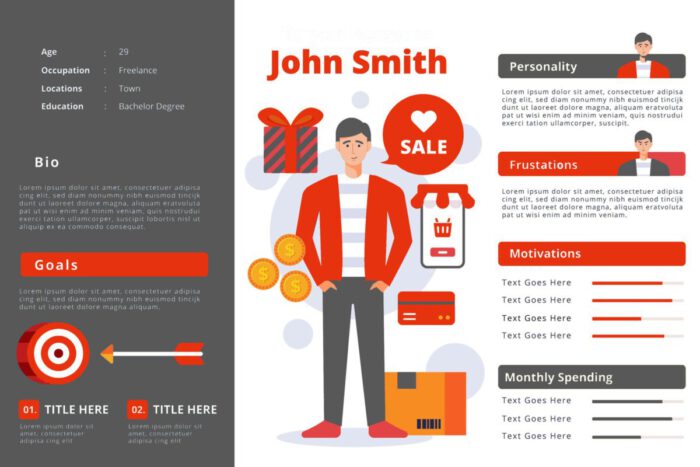We have screened our customers, talked to them, and collected and analyzed data. We have implemented systems and tools to keep information about our customers up to date. Now you need to work with all the information. Putting the customer on paper is the next step.
In very few cases it makes sense to describe each individual customer – unless your customer base is tiny – but we make do with an aggregation.
What we want to create is an exemplary, collective picture of a certain group of customers.
This image should represent their behavior patterns, needs, wants, and characteristics.
These aggregated images of a customer are often called a customer/ user profile, persona, or customer profile. They are helpful and bring efficiency to the organization if (!), on the one hand, they are kept up-to-date and, on the other hand, they are actively used (and do not disappear in a marketing manager’s drawer).
What are the concrete advantages of putting your customer on paper?
- The development of a persona alone means that one deals intensively with the customer and walks in his shoes for a while. It promotes empathy for the customer and thus the ability to make decisions in the customer’s best interest.
- You create a common and unified working basis for everyone in the company and thus allow less of the individual bias of employees to decide.
- The detailed description of the different customer types facilitates communication and coordination for tasks that are to be focused on these customers.
- The existence of customer profiles speeds up customer-related decisions.
- In product development, it focuses designers and developers on a specific group of users, leading to better design decisions.
How can you go about putting your customer on paper?
How should such a customer profile be structured? What content should be included and how do we best present it?
In the following, we have listed some information that helps to describe the customer or user in sufficient detail. In addition, there are methods or tools that help to process and structure this content in a clear form.
| Information about the customer | Method/ | Tool |
| Description of a person with demographic characteristics, individual character, ways of thinking and behaving, goals, socio-economic background, employment, etc., fed mostly by quantitative customer research and analytics. | Persona | 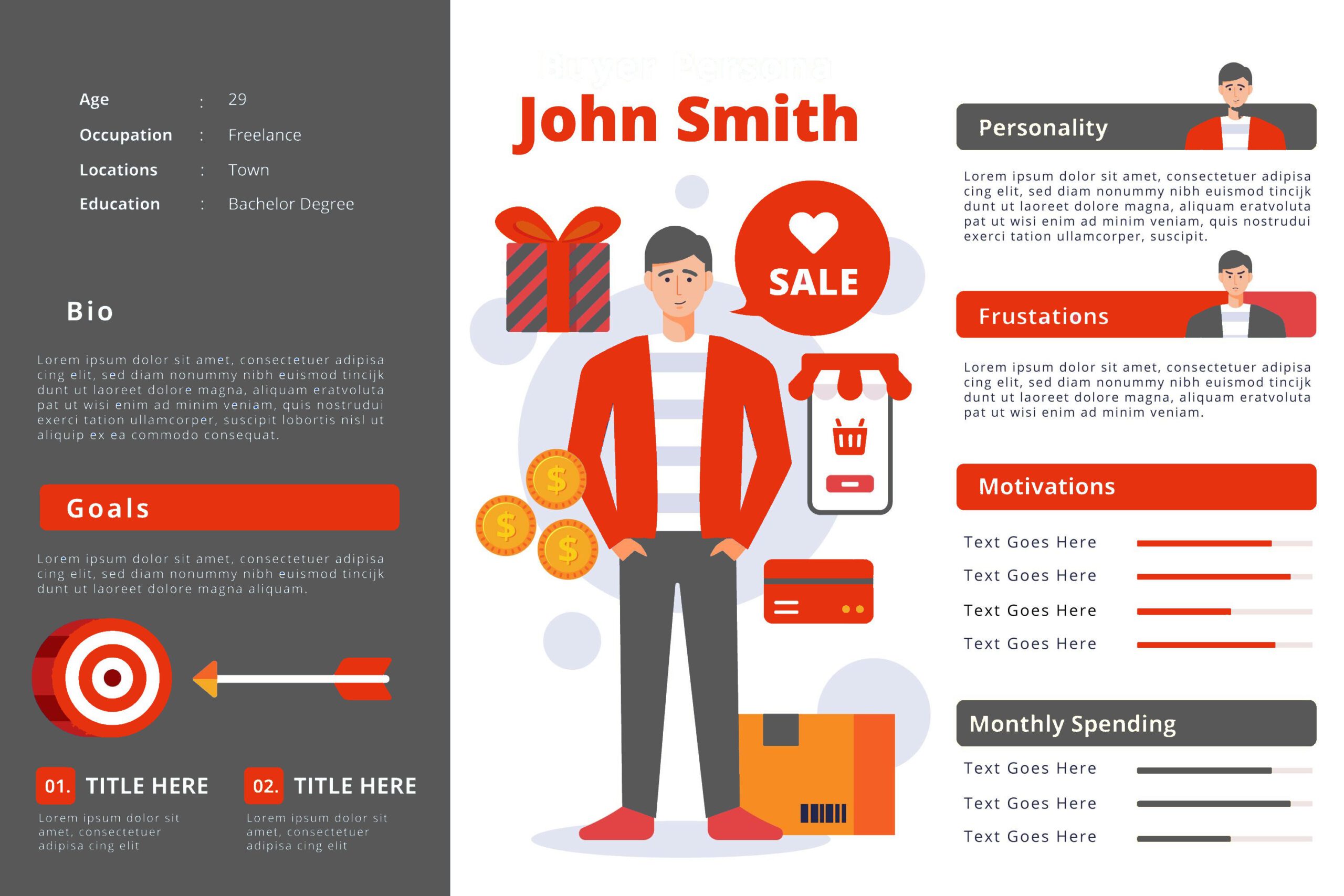 |
| What the customer says, thinks, does and feels. The rather hidden motivation of the customers, the non-rational motives. | Empathy Maps | 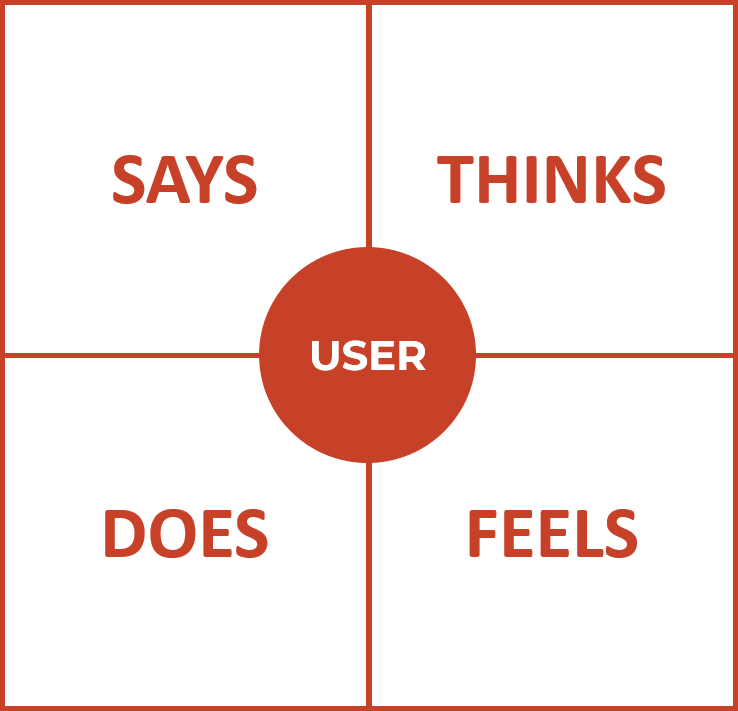 |
| What task, what purpose does the product/service fulfill for the customer? What are the (underlying) goals? What is the meaning? | Jobs-to-be-done |  |
| Helps to structure information from the areas of activity, environment, interaction, user and objects and supports us to recognize connections. | AEIOU-Method | 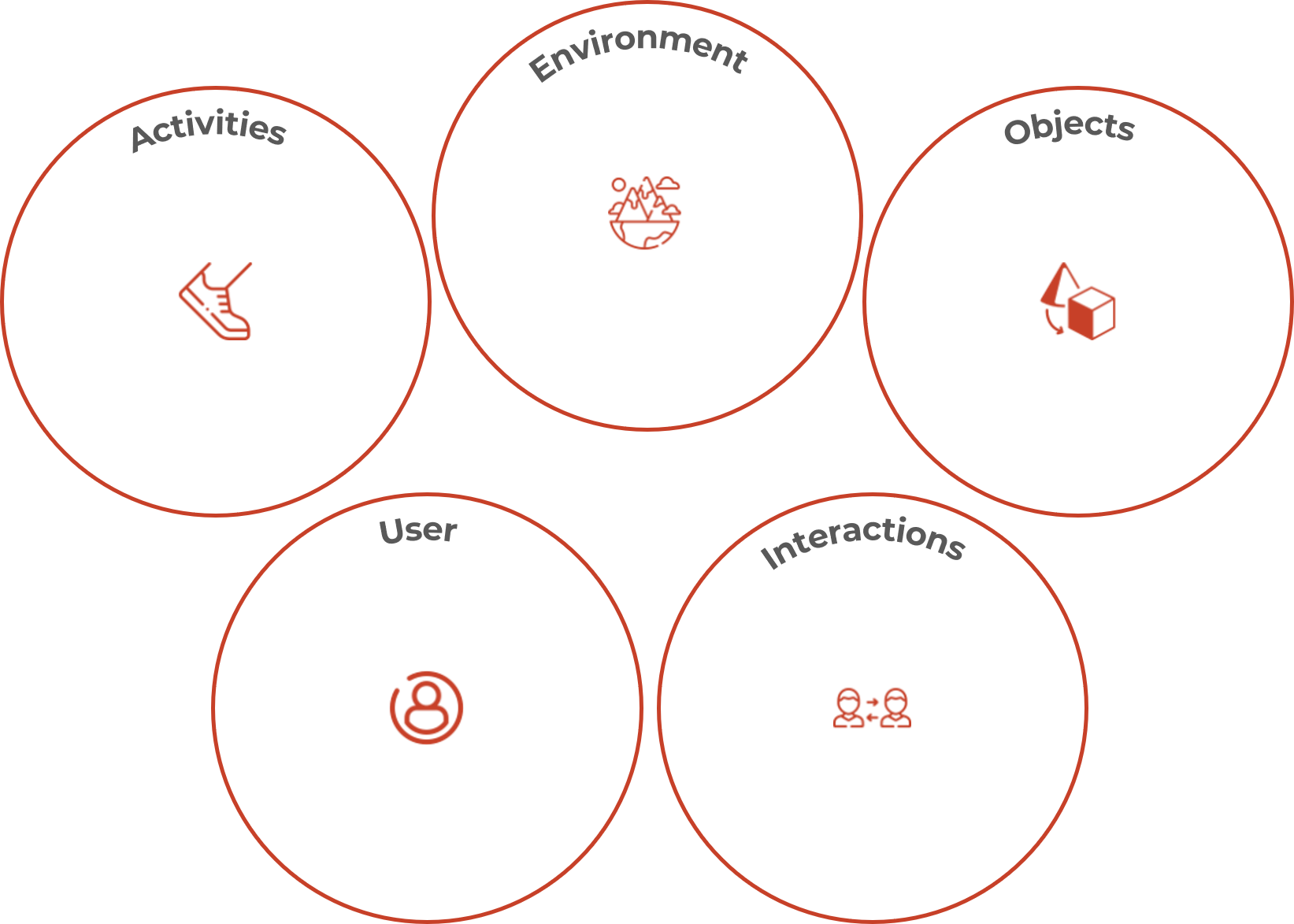 |
| Chronological representation of a customer’s „journey“ from initial awareness through search and information behavior, decision-making and purchasing process, usage behavior, and subsequent disposal or even replacement. | Customer Journey | 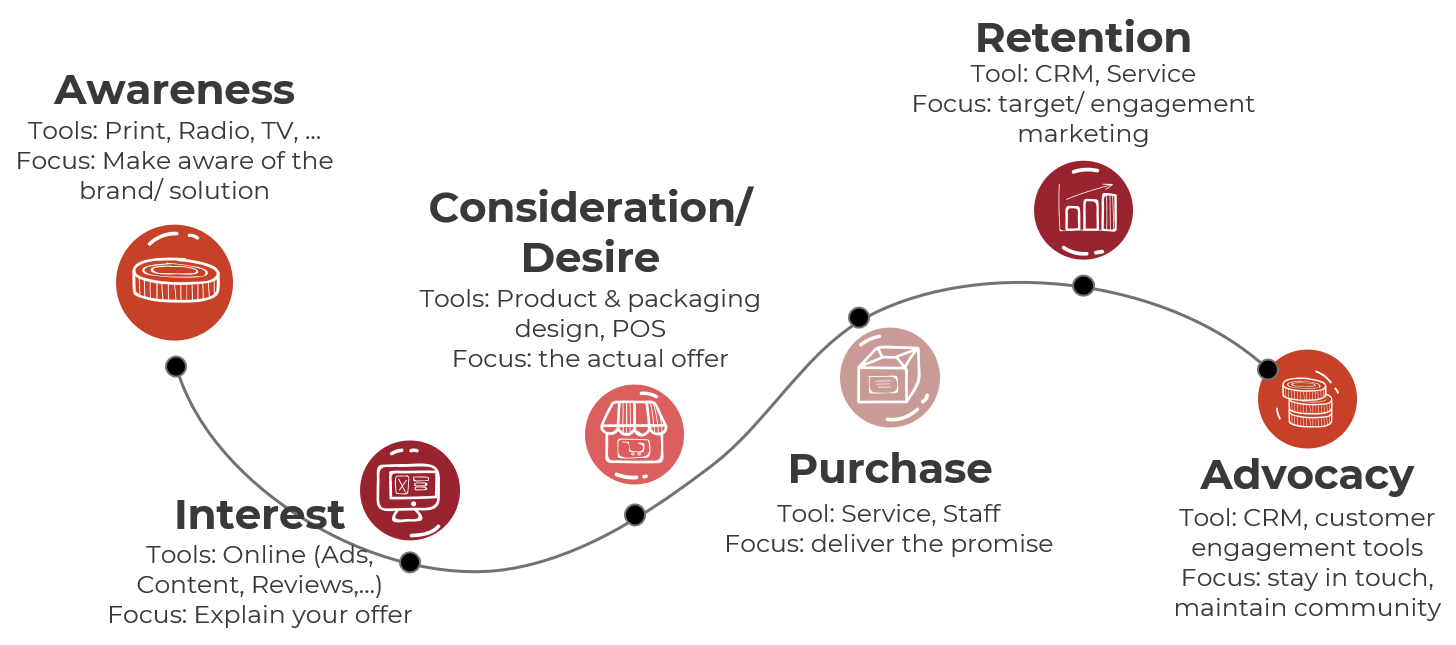 |
| Formulation of customer view including description of person, need, context and motivation. | POV | 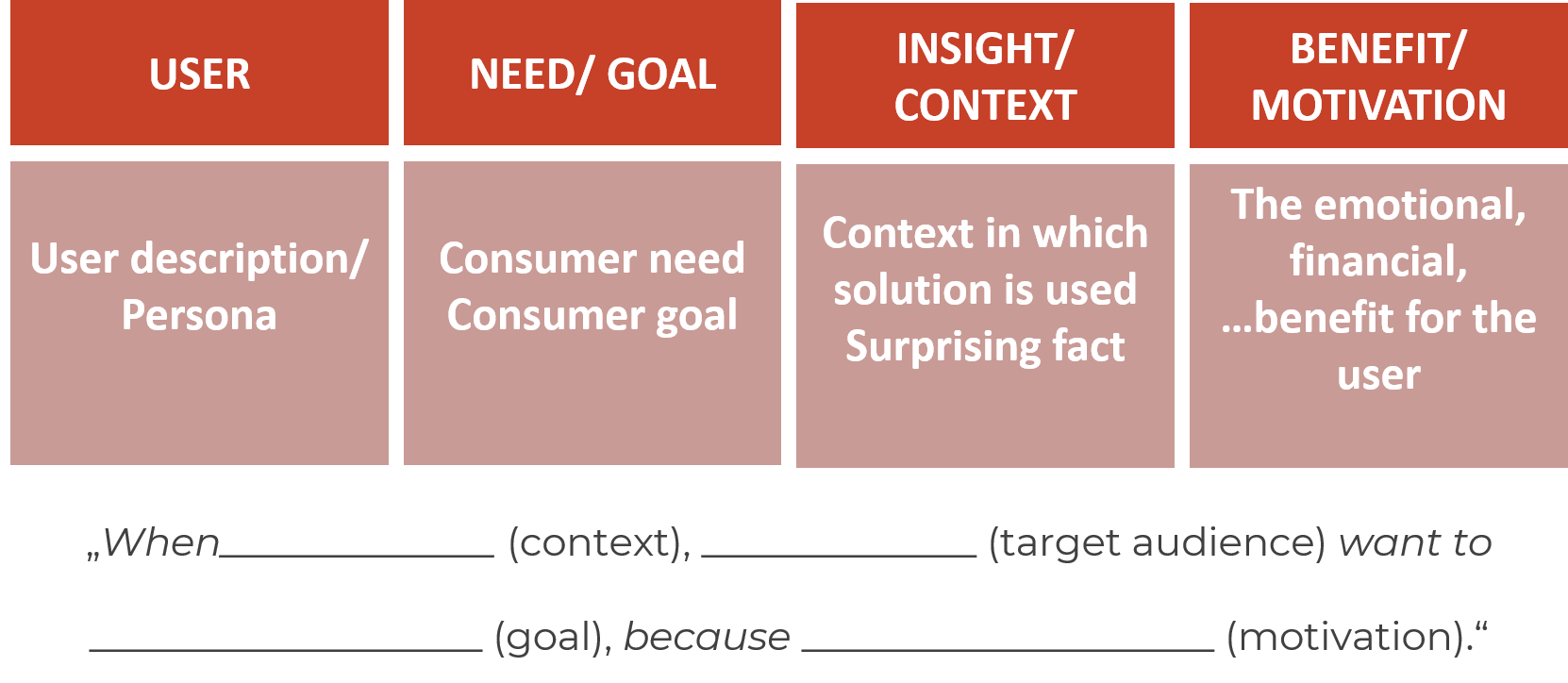 |
The power of visualization
Since 65% of us are rather visual people, it also helps to add visual elements to the description of the customer. Thus, photos of the typical customer and his environment or visualization of important statements and stories of the user can help.
Content is key
In the end, it is not necessarily crucial which method or representation you use, but that you create enough depth in the information about the customer. So much that the employees working with the descriptions can put themselves in the customer’s shoes, really understand what his „gains“ and „profits“ are, what drives the customer and what can make him happy.
In other words, this exercise helps your employees to know how they can serve customers to make a part of their life significantly better and return happily to your company for more.
Download the full article as pdf-file here.
Addendum: The data and information required for the above representations are fed by quantitative and qualitative customer research, which we highlighted in our article „Behind the facade of the customer“.
If it’s not yet clear, which customer your company should actually focus on, we recommend reading „How much is my customer worth“ to learn more about identifying the most valuable customer.
Sources:
strategyzer: Value Proposition Design
Lewrick, Link, Leifer: Das Design Thinking Playbook
https://dschool-old.stanford.edu/
Picture sources:
Header: www.freepik.de, Infographic vector created by stories
Tool grafics: Caroline Schliephake
